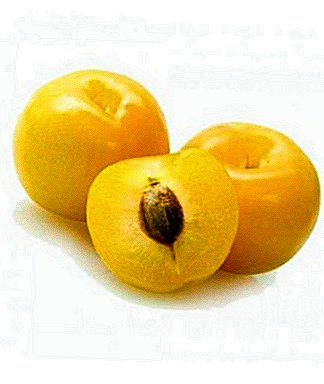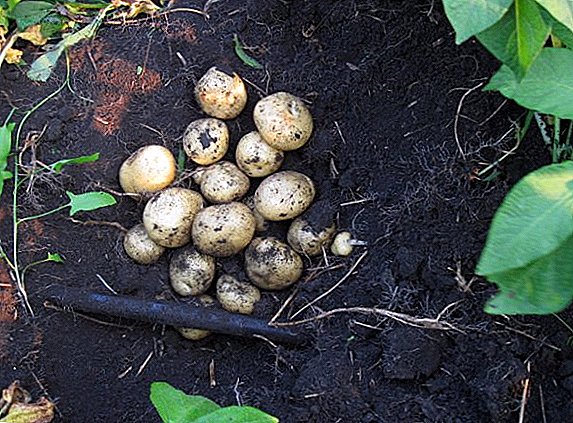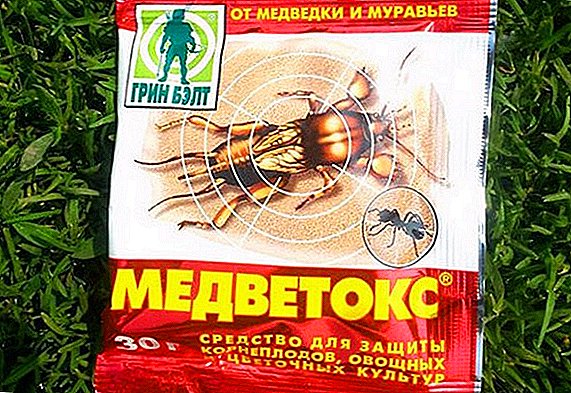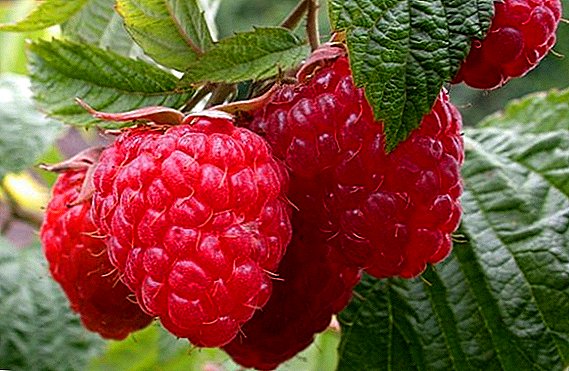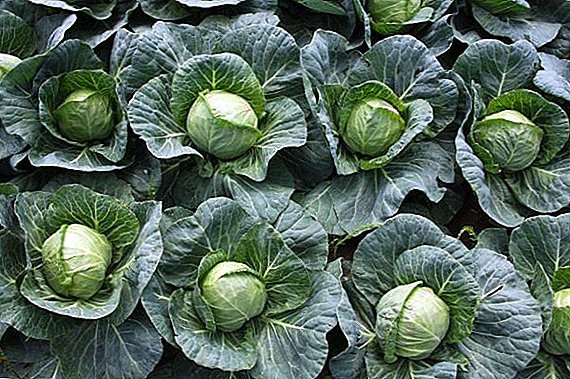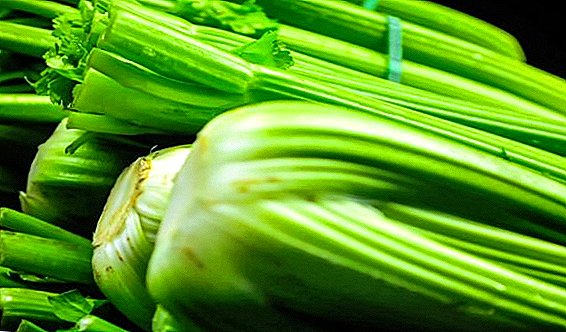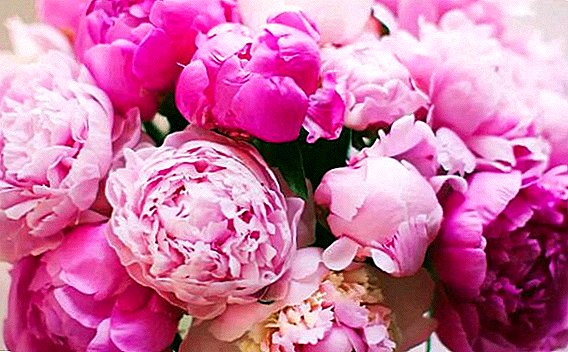 Even unpretentious perennials with the onset of cold weather require special care.
Even unpretentious perennials with the onset of cold weather require special care.
Many do not bother with such works, leaving everything to chance.
But experienced gardeners know how to prepare peonies for winter, and willingly share their knowledge with everyone.
Termination of watering and feeding
After completion of the flowering period, the plant no longer needs moisture in the same volume as during active growing season. The summer norm of irrigation for pions is 10-25 liters of water under a bush with an interval of a week. Since the beginning of autumn there is no need for such quantities of liquid, and moisture is gradually reduced.
It will be interesting for you to get acquainted with the list of popular tree peony varieties.It is gradually: the immediate rejection of watering is difficult for even adult flowers, not to mention the young. Remember that caring for peonies after flowering is necessary so that in future they will delight you with bright buds, and not in order to “close the season” as soon as possible.
You can apply this irrigation scheme: 25 liters, after a week or two, already 15-20, and so on until complete cessation.
Important! To achieve the maximum number of flowering buds, fading inflorescences are immediately removed from the grassy peonies. If they want to get large flowers, then leave only the upper inflorescences.September and the beginning of October are the ideal time to feed.
 By themselves, peonies are very sensitive to such feeds, and in the middle of autumn they are better strengthened. The fact is that in the first autumn weeks, when the flowering is over, the roots continue to grow deep, and the introduction of a new portion of nutrients will be very useful.
By themselves, peonies are very sensitive to such feeds, and in the middle of autumn they are better strengthened. The fact is that in the first autumn weeks, when the flowering is over, the roots continue to grow deep, and the introduction of a new portion of nutrients will be very useful.For this purpose, potassium-phosphorus solutions are used. 15 g of phosphorus and potassium will be enough for 10 liters of water. The resulting mixture is poured so that it does not fall on the neck of the plant. The same elements can be applied in dry form (they are sold in the form of tablets). Before such introduction the bush is plentifully watered and evenly sprinkled the crushed tablets into the well.
Did you know? China has developed a special relationship to the peony, where it is still considered a royal plant. It was from the Middle Kingdom that he came to Europe. Peony is one of the main symbols of Chinese culture. The combination of such a flower and a butterfly has long become a classic image in Chinese literature and painting.Novice flower growers often have a question - peonies have faded, and what to do next with the soil. Everything is simple here: the roots are fed with mullein mulch (in proportion with water 1/10).
 At this stage, it is not recommended to get involved in both organic fertilizers and strong mineral water. Complex formulations are also not always helpful.
At this stage, it is not recommended to get involved in both organic fertilizers and strong mineral water. Complex formulations are also not always helpful.We reveal the secrets of peony care in the open field.
Trimming features
This is the most important part of frost preparation. Leaving it in early spring is undesirable - then the secateurs may simply not “take” the stalk softened over the winter. The main thing is to catch the right moment. Depending on the region, this may be both the last decade of October and mid-November. If we take "according to science", then the preparation of pions for winter determines the best time of pruning for the first days after frosts. It is important that the soil was dry.
By this time, the sprouts will already slag on the ground, and such manipulation will not harm the plant. Cut the grassy peonies as low as possible without leaving a high hemp (2-3 cm is enough). All ground part is removed (flowers and stems with leaves). Then they are collected and burned.
Important! Peony is readily accepted on almost any type of soil. The only exceptions are the “acidic” soils and areas full of insects.For tree lines, the algorithm is slightly different: they try to keep the ground part.
Some use cut material for cover, but this is not worth it - it can be a good place for hibernation and reproduction of pests. Lying nearby leaves are also collected and disposed of.  Some gardeners after such an event make a combined top-dressing from tree resin and bone meal (60/40%).
Some gardeners after such an event make a combined top-dressing from tree resin and bone meal (60/40%).
Did you know? The ancient Greeks believed that peonies can heal 20 diseases. Therefore, there was no monastic garden in which they would not grow. Up to the 1800s, such flowers were used only as medicinal plants, some varieties as food seasoning.There is no difficulty here, although newcomers make mistakes by inexperience. Here are examples of such "blunders" when pruning:
- Early removal of the shoot. If autumn is warm, then the stems will grow again and will grow back just under the frost. A drop in temperature in such a situation weakens the plant.
- At the other extreme will be tightening with trimming. So the rhizome can simply rot.
- Leave a small part of the stem much higher than the ground level (3-5 cm). It is a mistake to think that it is hardening perennial. On the contrary, this procedure inhibits the growth and flowering in subsequent years.
 Situations are different, but to improve the time and remove the stems in the country is still necessary, otherwise the last bloom risks being the last. So pruning peonies in the fall is a must.
Situations are different, but to improve the time and remove the stems in the country is still necessary, otherwise the last bloom risks being the last. So pruning peonies in the fall is a must.Peony shelter
To protect the rhizome from frost, apply mulching holes. The best materials for the "blankets" are humus and dry peat. The thickness of the layer depends on the weather conditions in a specific area: if 10–12 cm is enough for areas with a temperate climate, then 15–20 cm will be needed for the northern sections.
The benefits of such shelters are many - they not only retain heat, but also feed the soil with beneficial substances. For "age" plants, it is also an excellent growth stimulant. 
Materials such as are not suitable for coating:
- leaves;
- manure;
- straw;
- coniferous "paws";
- sawdust and shavings.
With the onset of spring, such a "cover" is removed, but not completely: a thin layer of mulch is left in the hole, which will restrain the growth of weeds.
Important! If there is a need for early pruning, leave 3-4 leaves on each stem. So the plant will accumulate strength for the growth of future buds.Now we know how to take care of peonies in the fall and how thorough preparation of these flowers for winter looks like. Considering these nuances, you will be able to observe spectacular flowers in your own area in the future. More bright colors in life!



